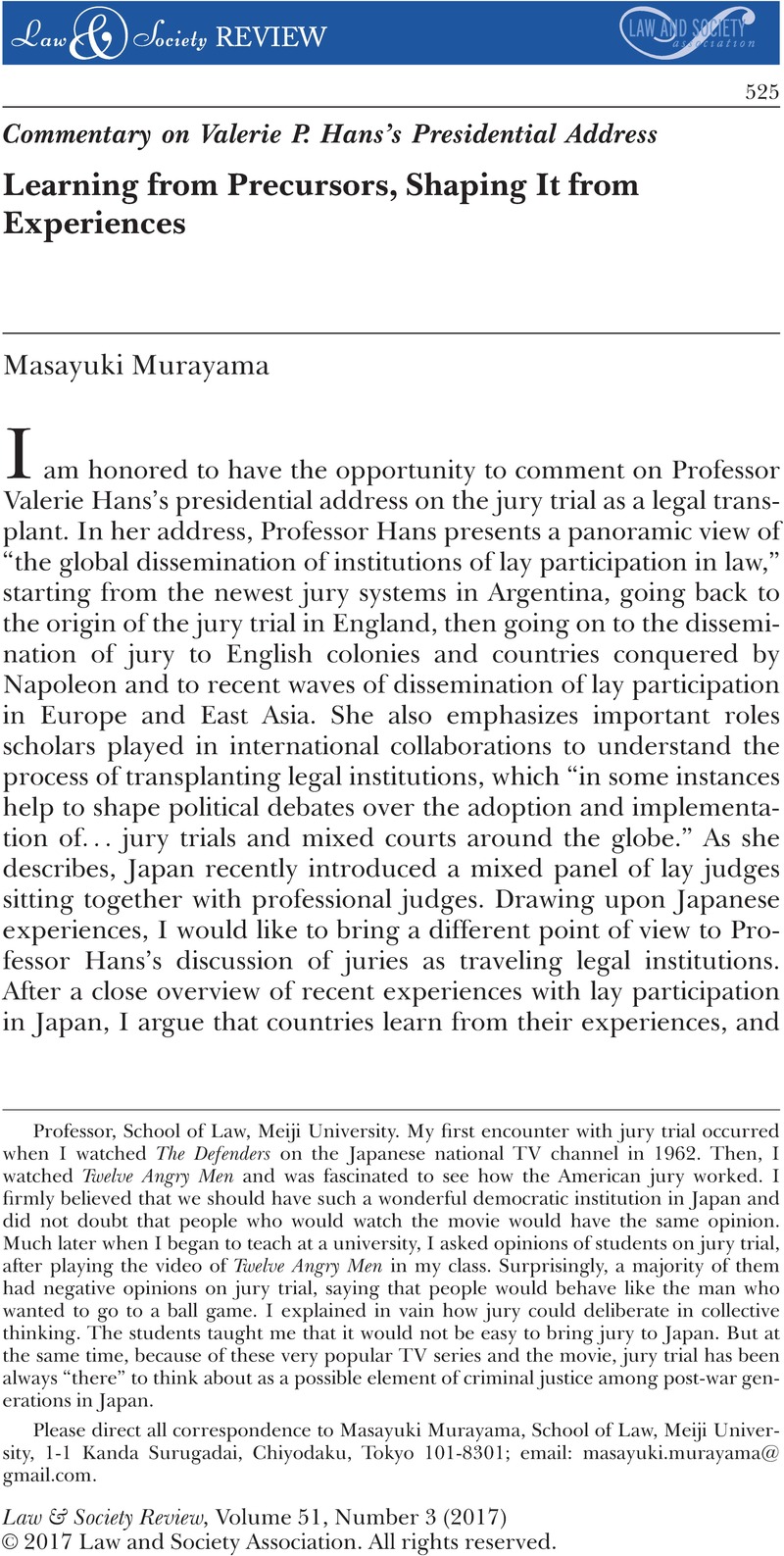No CrossRef data available.
Article contents
Learning from Precursors, Shaping It from Experiences
Published online by Cambridge University Press: 01 January 2024
Abstract

- Type
- Presidential Address and Commentary
- Information
- Copyright
- © 2017 Law and Society Association.
Footnotes
Professor, School of Law, Meiji University. My first encounter with jury trial occurred when I watched The Defenders on the Japanese national TV channel in 1962. Then, I watched Twelve Angry Men and was fascinated to see how the American jury worked. I firmly believed that we should have such a wonderful democratic institution in Japan and did not doubt that people who would watch the movie would have the same opinion. Much later when I began to teach at a university, I asked opinions of students on jury trial, after playing the video of Twelve Angry Men in my class. Surprisingly, a majority of them had negative opinions on jury trial, saying that people would behave like the man who wanted to go to a ball game. I explained in vain how jury could deliberate in collective thinking. The students taught me that it would not be easy to bring jury to Japan. But at the same time, because of these very popular TV series and the movie, jury trial has been always “there” to think about as a possible element of criminal justice among post-war generations in Japan.




